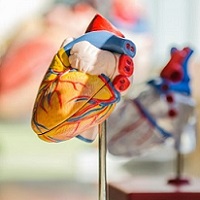 Additive manufacturing is proving to have major potential in medical industries.
Additive manufacturing is proving to have major potential in medical industries.
Somewhat subtly, additive manufacturing has become a significant topic of conversation in healthcare in recent years. It’s the sort of thing one might not notice without looking for it specifically, but the truth is that in many ways this modern (nearly futuristic) manufacturing process represents monumental potential in medical industries. So as we head into a new decade in which additive manufacturing will be playing a more prominent role, we’re providing this brief update on the processes and possibilities involved, and what could be next.
3D-Printed Models
When we consider additive manufacturing in relation to healthcare, it’s important not to think solely of direct medical use or application. Products made via this process can also play significant roles in evaluation, education, and practice. To that point, a previous article here that looks at precision medicine under the microscope made note of GE advancing 3D design software, specifically in a way that can reduce the time it takes to create 3D models. Such models can now be made in minutes, which introduces all sorts of potential uses. Broadly speaking though, the potential to print 3D models – from body scans, computer renderings, and exact measurements – should simplify and improve many medical practices.
It’s Not All 3D Printing
Additive manufacturing and 3D printing are often made out to be synonymous, and in a way they are – in that all 3D printing is additive manufacturing, in theory. However, not all additive manufacturing necessarily needs to be 3D printing. Specifically, the similar but distinct processes of rapid mold design and production tooling can also be characterized as additive manufacturing, and also have a growing influence on the medical world. Fictiv’s guide to injection molding explains these processes and how they can be used for the quick manufacturing of complex designs in bulk, which speaks to their utility in healthcare. Indeed, injection molds can be used for so many different types of designs it’s difficult to characterize their applications. But whether a hospital needs bulk orders of new storage containers for medicine, medical education programs need new models for teaching, or anything similar, this alternative form of additive manufacturing can be of use.
Costs Cut & Material Saved
Stepping aside from specific applications or methods, additive manufacturing is proving to have two incredibly significant perks for industries in medicine: It can reduce costs and reduce material used. It goes without saying that the cost of equipment in healthcare is astronomical, and while it’s difficult to provide an exact figure characterizing waste, we can safely say that the industry accounts for a lot of it. Additive manufacturing doesn’t entirely do away with these problems by any means, but by its very nature it generates less waste than any other form of precision or bulk manufacturing. And, in using less material, requiring less labor, and shrinking supply chains, it figures to cut costs in the long run as well.
A Future Of Prosthetics & Implants
Finally, to speak to one more specific benefit of additive manufacturing in medicine, we should note that the process has opened up a whole new future for prosthetics and even implants. Just recently, an article at Now spoke to the improving quality of 3D-printed organs, and even the creation of a functional heart, noting that the implications are vast and revolutionary. This doesn’t necessarily mean that hospitals are ready to do organ transplants with 3D-printed organs, nor that similarly created implants are being widely used in the biomedical industry. But things are moving in that directly fairly clearly, such that it’s reasonable to believe we may be heading for a future in which we can improve and even replace bodily functions with these materials.
It’s likely that even these updates only scratch the surface of how additive manufacturing will affect the world of medicine. Going even just by these points though – the use of models, the various processes, cost and material saved, and the future of implanted material – it’s clear that the technology is going to have significant, widespread impact that may just change the future of healthcare.
This article was written by Michelle Carter, Journalist
